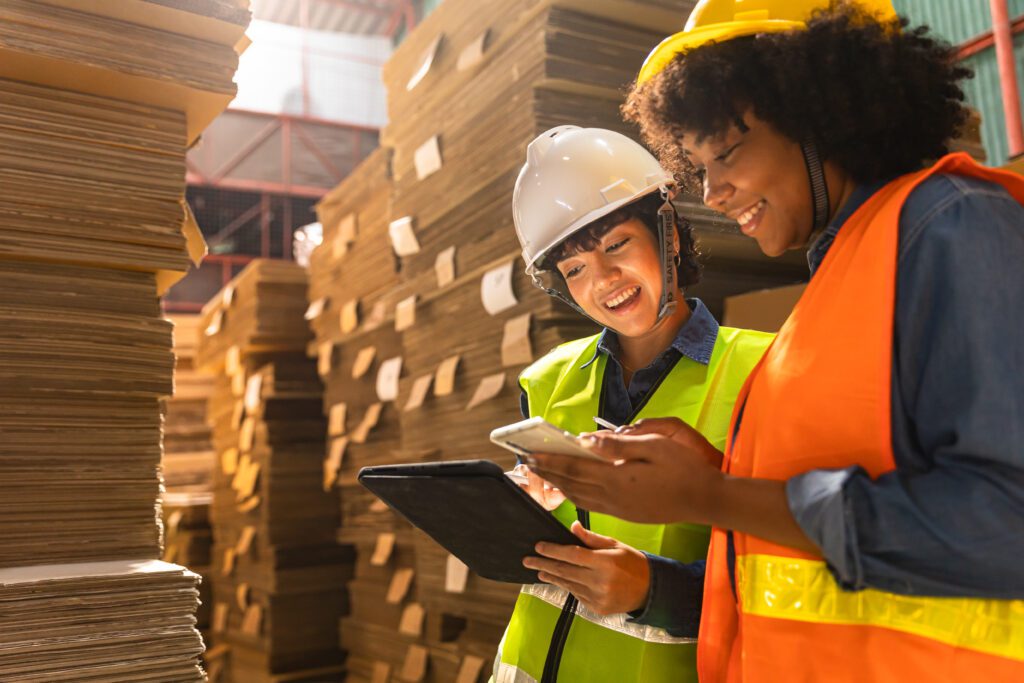Seasonal inventory fluctuations can significantly impact the success of your eCommerce business. Properly managing inventory during peak seasons requires careful planning, forecasting, and efficient warehouse operations. In this blog post, we will explore strategies and best practices to help you navigate seasonal inventory fluctuations and ensure smooth operations in your warehouse.
Understanding Seasonal Inventory Fluctuations
Seasonal inventory fluctuations are variations in demand and sales that occur during specific times of the year. As an eCommerce business, it is crucial to understand these fluctuations and their underlying causes to effectively manage your inventory. Here are some key points to consider:
Definition of Seasonal Inventory Fluctuations
- Seasonal inventory fluctuations refer to the predictable patterns of increased or decreased demand for certain products during specific times of the year.
- These fluctuations are influenced by various factors such as holidays, changing weather conditions, cultural events, and annual buying trends.
Why Seasonal Fluctuations Occur in eCommerce
- Seasonal fluctuations are primarily driven by consumer behavior and market dynamics.
- Holidays and special occasions often result in increased demand for specific products, such as gifts during the Christmas season or outdoor supplies during the summer.
- Seasonal trends can also be influenced by industry-specific factors, such as back-to-school shopping for retailers in the education sector.
READ MORE: 7 Tips on Preparing for the eCommerce Holidays
The Impact of Seasonal Fluctuations on Business Performance
Understanding and effectively managing seasonal fluctuations is critical for maintaining optimal inventory levels and maximizing sales potential. Failing to adjust inventory levels can lead to stockouts, missed sales opportunities, and dissatisfied customers.
However, carrying excess inventory during off-peak seasons can tie up valuable resources and increase storage costs.
Challenges Posed by Seasonal Inventory Management
- Managing seasonal inventory fluctuations comes with its own set of challenges for eCommerce businesses.
- Forecasting accurately can be challenging due to the dynamic nature of consumer behavior and external factors.
- Maintaining appropriate inventory levels requires striking a delicate balance between having enough stock to meet demand and avoiding excess stock that ties up capital and warehouse space.
In the next sections, we will explore strategies and best practices to help you effectively manage seasonal inventory fluctuations, ensuring smooth operations in your warehouse and maximizing your eCommerce business’s success.
Discover how our WMS can improve your business
The Importance of Planning Early
Proactive and early planning is crucial for successfully managing seasonal inventory fluctuations. By taking the time to plan ahead, eCommerce businesses can mitigate risks, optimize inventory levels, and ensure smooth operations during peak seasons. Here are key aspects to consider when it comes to early planning:
The Significance of Early Planning for Seasonal Inventory Management
- Early planning allows businesses to anticipate and prepare for the upcoming peak seasons.
- It provides sufficient time to analyze historical data, market trends, and customer preferences to forecast demand accurately.
- By identifying potential challenges in advance, businesses can develop effective strategies to address them and ensure a seamless customer experience.
Analyzing Historical Data and Trends to Forecast Demand
- Historical sales data plays a crucial role in understanding seasonal patterns and predicting future demand.
- Analyze past sales data, including the timing and magnitude of sales peaks and valleys, to identify trends and patterns.
- Consider external factors that may influence demand, such as industry trends, economic indicators, and consumer behavior during specific seasons.
Factors to Consider When Forecasting for Seasonal Products
- For businesses that offer seasonal products, it is essential to consider factors that may impact demand, such as weather conditions, holidays, and cultural events.
- Look at historical data for specific seasonal products and analyze the impact of external factors to make accurate forecasts.
- Take into account any shifts in customer preferences, market trends, or competitive landscape that may affect demand for seasonal items.
Collaborating with Suppliers and Manufacturers for Supply Chain Readiness
- Effective collaboration with suppliers and manufacturers is crucial to ensure a reliable supply chain during peak seasons.
- Engage in open communication with suppliers to understand their capabilities, lead times, and capacity to meet increased demand.
- Establish strong relationships with suppliers and explore options like pre-booking orders or securing priority access to ensure a steady supply of seasonal inventory.
- Diversifying suppliers and manufacturers may also help ensure minimal delays in shipments of stock
By planning early and forecasting demand accurately, eCommerce businesses can position themselves for success during seasonal inventory fluctuations. In the next sections, we will delve deeper into strategies to balance inventory levels, optimize order fulfillment processes, and leverage technology to streamline operations during peak seasons.

How to Balance Inventory Levels: Avoiding Overstock and Stockouts
One of the key challenges in managing seasonal inventory fluctuations is finding the right balance between stockouts and excess stock. Maintaining optimal inventory levels is essential to meet customer demand, minimize costs, and maximize sales.
The Fine Line between Inadequate and Excessive Inventory Levels
- Inadequate inventory levels can result in stockouts, missed sales opportunities, and dissatisfied customers.
- Excessive inventory levels tie up working capital, increase carrying costs, and may lead to overstock situations.
Finding the right balance between too much and not enough inventory requires careful planning, accurate forecasting, and continuous monitoring of sales trends and market dynamics.
Consequences of Stockouts and Missed Sales Opportunities
- Stockouts during peak seasons can lead to frustrated customers, negative reviews, and loss of potential revenue.
- When customers encounter stockouts, they may turn to competitors, resulting in a missed opportunity to capture sales and customer loyalty.
- Inventory shortages can damage the reputation of your eCommerce business and lead to long-term customer dissatisfaction.
Risks Associated with Overstocking and Excess Inventory
- Overstocking inventory ties up capital and occupies valuable warehouse space.
- It increases carrying costs, including storage, insurance, and potential obsolescence or expiration.
- Excess inventory can lead to a decrease in profitability if the products cannot be sold at their original price or if they become outdated.
READ MORE: Managing Excess Inventory: How to Avoid Overstock and Optimize Warehouse Operations
Strategies to Optimize Inventory Levels During Seasonal Fluctuations
- Accurate demand forecasting is the foundation for effective inventory management.
- Leverage historical data, market trends, and customer insights to forecast demand and plan inventory levels accordingly.
- Establish safety stock levels to account for unforeseen fluctuations in demand or supply chain disruptions.
- Implement just-in-time inventory practices to minimize excess inventory while ensuring products are available when needed.
By implementing these strategies, eCommerce businesses can strike the right balance between stockouts and excess stock, enabling them to meet customer demand efficiently during peak seasons. In the following sections, we will explore best practices for efficient order fulfillment, warehouse space management, and the use of inventory management systems to optimize seasonal inventory management.

Efficient Order Management in Warehouse Operations
Efficient order fulfillment and streamlined warehouse operations are crucial for managing seasonal inventory fluctuations effectively. By optimizing these processes, eCommerce businesses can ensure timely and accurate order processing, reduce costs, and enhance customer satisfaction. Here are key considerations for achieving efficient order fulfillment and warehouse operations:
Streamlining Order Processing and Fulfillment
- Implement an efficient order processing system that minimizes manual errors and reduces order fulfillment time.
- Utilize automation technologies, such as barcode scanning and order management software, to streamline order picking, packing, and shipping processes.
- Optimize order batching and picking strategies to maximize efficiency and reduce travel time within the warehouse.
READ MORE: Ensuring Efficient Picking and Packing in Warehouse Operations
Effective Warehouse Space Management
- Efficient use of warehouse space is crucial during peak seasons to accommodate increased inventory levels.
- Analyze warehouse layout and storage systems to maximize storage capacity and ensure easy accessibility to products.
- Implement slotting optimization techniques to assign products to the most appropriate storage locations based on demand and picking frequency.
Inventory Tracking and Real-Time Visibility
- Implement robust inventory tracking systems to monitor stock levels, track product movement, and identify potential stockouts or overstock situations.
- Leverage barcode scanning or inventory management software to achieve real-time visibility into inventory levels and locations.
- Utilize data analytics to gain insights into inventory performance, identify slow-moving or obsolete stock, and make data-driven decisions.
Discover how our WMS can improve your business
Collaboration with 3PL Partners
- For eCommerce businesses working with third-party logistics (3PL) providers, effective collaboration is essential.
- Clearly communicate seasonal inventory requirements and expected order volumes to ensure the 3PL can adequately support your operations.
- Regularly review performance metrics and maintain open lines of communication to address any issues promptly and proactively.
By focusing on efficient order fulfillment and warehouse operations, eCommerce businesses can enhance productivity, reduce costs, and meet customer expectations even during seasonal inventory fluctuations.
Discover how our WMS can improve your business
Leveraging Technology for Seasonal Inventory Management
Technology plays a vital role in optimizing seasonal inventory management processes, improving efficiency, and enhancing overall operational performance. By leveraging the right tools and solutions, eCommerce businesses can streamline inventory control, automate workflows, and gain valuable insights into their inventory performance. Here are key areas where technology can be leveraged for effective seasonal inventory management:
Warehouse Management Systems (WMS)
- A warehouse management system (WMS) streamlines warehouse operations, optimizing tasks such as receiving, put-away, picking, and packing.
- Find a WMS that supports inventory management to track stock levels, monitor product movement, and automate manual processes.
- Demand forecasting, automated replenishment, and reporting capabilities can help to optimize inventory levels during seasonal fluctuations.
- Utilize a WMS to improve inventory accuracy, reduce errors, and enhance order fulfillment efficiency.
- Leverage features like wave picking, batch processing, and real-time inventory updates to increase productivity and minimize order processing time.
Demand Forecasting and Analytics
- Utilize data analytics and forecasting tools to gain insights into customer demand patterns, identify trends, and make accurate demand forecasts.
- Leverage historical sales data, market trends, and customer behavior analysis to optimize inventory levels and ensure adequate stock during peak seasons.
- Utilize advanced forecasting algorithms and predictive analytics to improve forecast accuracy and reduce the risk of stockouts or excess inventory.
Integration with Sales Channels and Marketplaces
- Integrate your WMS and OMS with all channels you’re using, such as eCommerce platforms and marketplaces, to ensure real-time inventory synchronization.
- Leverage multi-channel integration to streamline order processing, improve customer satisfaction, and provide a seamless shopping experience.
By leveraging technology solutions like a WMS/OMS, eCommerce businesses can optimize seasonal inventory management, improve operational efficiency, and deliver exceptional customer experiences.
Adapting and Adjusting Strategies for Seasonal Inventory Management
Adapting and adjusting strategies is essential for effectively managing seasonal inventory fluctuations in a dynamic eCommerce landscape. As market trends, customer preferences, and external factors evolve, eCommerce businesses must be agile and responsive in their approach. Here are key considerations for adapting and adjusting strategies for seasonal inventory management:
Continuous Monitoring and Analysis
- Continuously monitor sales data, inventory performance, and market trends to identify patterns and make informed decisions.
- Regularly analyze historical data, customer feedback, and market research to understand changing customer preferences and adjust inventory levels accordingly.
- Utilize business intelligence tools and reporting capabilities to gain insights into sales performance, product demand, and inventory turnover rates.
Collaboration with Suppliers and Vendors
- Establish strong relationships with suppliers and vendors to ensure timely delivery of inventory during peak seasons.
- Communicate forecasted demand and inventory requirements to suppliers in advance to avoid supply chain disruptions.
- Explore options for alternative suppliers or backup inventory sources to mitigate risks associated with unexpected fluctuations in demand.
Promotions and Marketing Strategies
- Develop targeted promotions and marketing campaigns to drive customer demand during seasonal peaks.
- Offer special discounts, bundle deals, or limited-time offers to encourage sales and prevent excess inventory buildup.
- Leverage data analytics and customer segmentation to personalize marketing efforts and maximize the effectiveness of promotional activities.
Continuous Improvement and Learning
- Embrace a culture of continuous improvement and learning within your eCommerce business.
- Regularly evaluate the effectiveness of your seasonal inventory management strategies and make necessary adjustments.
- Stay informed about industry trends, technological advancements, and best practices in inventory management to stay ahead of the competition.
By adapting and adjusting strategies based on real-time data, customer insights, and market trends, eCommerce businesses can optimize their seasonal inventory management efforts, minimize risks, and maximize profitability.
Continual Evaluation and Optimization
Performance Metrics and KPIs
- Define key performance indicators (KPIs) to measure the effectiveness of your seasonal inventory management efforts.
- Track and analyze metrics such as inventory turnover rate, fill rate, stockout rate, and order fulfillment cycle time.
- Regularly review performance metrics and compare them to industry benchmarks to identify areas for improvement.
READ MORE: 9 Essential Warehouse KPIs to Measure Performance
Feedback and Collaboration
- Seek feedback from customers, suppliers, and internal stakeholders to gain insights into the effectiveness of your seasonal inventory management practices.
- Foster collaboration and open communication with your team members, suppliers, and partners to identify opportunities for process improvement.
- Encourage cross-functional collaboration to leverage diverse perspectives and expertise in optimizing seasonal inventory management.
Continuous Training and Education
- Invest in training and education programs for your team members involved in inventory management processes.
- Stay updated on industry trends, technological advancements, and best practices through workshops, webinars, and industry conferences.
- Encourage a culture of continuous learning and knowledge sharing within your organization.
Agile Planning and Forecasting
- Adopt an agile planning approach to anticipate and respond to changing market dynamics and customer demand.
- Regularly review and update your inventory forecasts based on the latest market trends, sales data, and customer insights.
- Embrace flexibility in your inventory planning to accommodate unforeseen circumstances or unexpected shifts in demand.
By continually evaluating and optimizing your seasonal inventory management strategies, you can adapt to changing market conditions, maximize profitability, and deliver exceptional customer experiences.

Conclusion
Effectively managing seasonal inventory fluctuations is a critical aspect of running a successful eCommerce business. By implementing proactive planning, leveraging technology, and adopting best practices, eCommerce businesses can navigate seasonal peaks and troughs with confidence. Early planning, inventory optimization, efficient order fulfillment, and the use of technology solutions like inventory management systems and demand forecasting tools are key strategies for managing seasonal inventory fluctuations.
However, it’s important to strike the right balance between having enough stock to meet customer demand and avoiding excessive inventory buildup. The use of data analytics, collaboration with suppliers, and continuous evaluation and optimization are essential for achieving this balance.
With the right strategies, tools, and a customer-centric approach, eCommerce businesses can effectively manage seasonal inventory fluctuations, minimize risks, optimize their operations, and deliver exceptional customer experiences throughout the year. By staying agile, responsive, and continually improving their inventory management practices, eCommerce businesses can achieve sustainable growth and maintain a competitive edge in the dynamic eCommerce landscape.
Discover how our WMS can improve your business














0 Comments